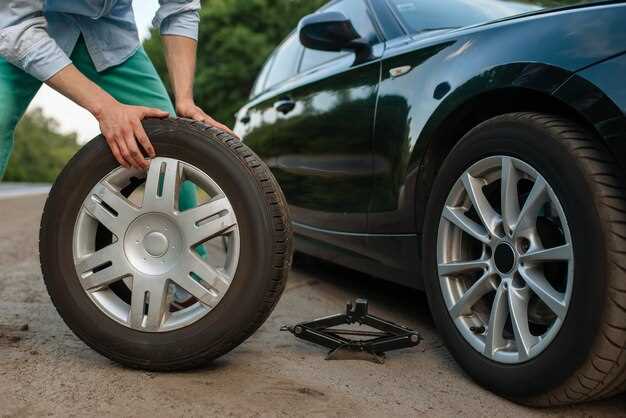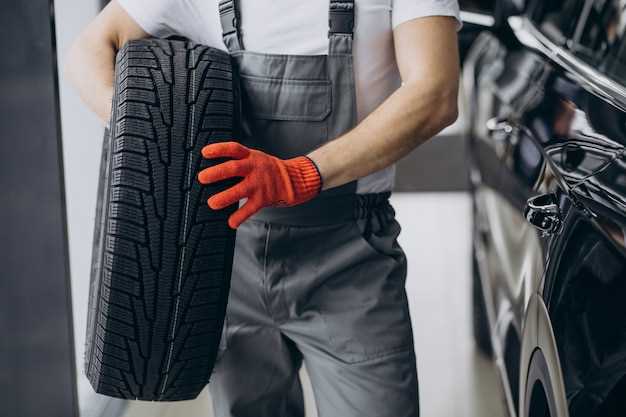
Run-flat tires are a revolutionary innovation in tire technology, designed to offer drivers enhanced safety and convenience. Unlike traditional tires, run-flat tires are engineered to maintain their integrity even after a puncture, allowing motorists to continue driving for a limited distance at reduced speeds. This feature eliminates the immediate need for a roadside tire change, providing peace of mind during unforeseen tire failures.
However, while the advantages of run-flat tires are significant, they also come with certain drawbacks. One of the primary benefits is the convenience they offer, as drivers can reach a service station without the hassle of changing a tire on the spot. Additionally, run-flat tires often come equipped with enhanced stability features, which can improve overall vehicle handling. On the flip side, these tires tend to be more expensive than conventional options and can result in a harsher ride due to their stiffer sidewalls.
As we delve deeper into the topic, we will explore both the benefits and drawbacks of run-flat tires, helping drivers make informed decisions regarding their tire choices. Understanding the implications of these advanced tires is crucial for ensuring safety and performance on the road.
Run-Flat Tires Explained: Benefits and Drawbacks
Run-flat tires are designed to provide a temporary solution to flat tires, allowing drivers to continue their journey after a puncture without the immediate need for repair or replacement. One of the primary benefits of run-flat tires is the convenience they offer. With these tires, drivers can typically travel up to 50 miles at speeds of around 50 mph on a flat, which reduces the likelihood of being stranded on the side of the road.
Another significant advantage is the enhanced safety they provide. Run-flat tires maintain their shape even when deflated, helping to prevent loss of vehicle control during a blowout. This stability can be particularly beneficial in emergency situations where swift maneuvers are necessary.
However, run-flat tires are not without their drawbacks. One notable downside is their generally higher cost compared to traditional tires. This investment can be a consideration for many drivers. Additionally, the ride quality can be stiffer, as run-flat designs often use reinforced sidewalls that can affect overall comfort. Lastly, in some cases, a limited selection of run-flat tire options may restrict consumers in terms of tire performance and tread patterns.
In conclusion, while run-flat tires provide significant convenience and safety benefits, they also present drawbacks that potential buyers should carefully consider. Evaluating these aspects can help drivers make informed decisions based on their specific driving needs and preferences.
How Do Run-Flat Tires Work Mechanically?
Run-flat tires are engineered to maintain their functionality even when they lose air pressure. This capability relies on specific structural design features that differentiate them from traditional tires.
At the core of a run-flat tire are reinforced sidewalls, which are thicker and sturdier than those found in standard tires. These robust sidewalls are key to supporting the weight of the vehicle when air pressure is lost. When a puncture occurs, the tire’s design allows it to continue operating for a limited distance–typically up to 50 miles–at a reduced speed of around 50 mph.
Additionally, some run-flat tires use an internal system of support elements or inserts that help bear the load when deflation occurs. This design factor further enhances the tire’s ability to manage the vehicle’s weight even without air pressure, ensuring stability and control during emergency scenarios.
Run-flat technologies can differ based on the manufacturer. Some utilize a self-sealing feature that can close minor punctures instantly, minimizing air loss. Others might rely solely on the structural integrity of the tire itself to handle the stresses of driving without inflation.
Overall, the mechanical workings of run-flat tires provide significant advantages, such as enhanced safety and convenience, allowing drivers to avoid immediate roadside tire changes in the event of a puncture.
What Are the Key Advantages of Using Run-Flat Tires?
Run-flat tires offer several advantages that enhance driving safety and convenience. One of the primary benefits is the ability to continue driving after a puncture or loss of air pressure. This feature allows drivers to travel for a limited distance, typically between 50 to 100 miles, at reduced speeds without needing to change the tire immediately.
Another significant advantage is the peace of mind that comes with knowing you can avoid being stranded in potentially dangerous situations. In case of a flat, drivers can reach a safe location, such as a gas station or garage, reducing the risk of accidents and exposure to roadside hazards.
Run-flat tires also eliminate the need for carrying a spare tire and the associated tools, contributing to a lighter vehicle and more cargo space. This convenience can be particularly beneficial in today’s fast-paced world, where time and efficiency are valuable.
Furthermore, these tires are often designed with enhanced performance characteristics, providing improved handling and stability even when deflated. This allows drivers to maintain control of their vehicle, which is crucial during emergency situations.
In summary, the key advantages of using run-flat tires include continued mobility after a tire failure, enhanced safety, greater convenience by eliminating the need for spare tires, and improved vehicle performance. These factors make run-flat tires a compelling option for many drivers.
What Are the Common Disadvantages of Run-Flat Tires?
Run-flat tires offer several advantages, including the convenience of driving short distances after a puncture. However, they also come with several notable disadvantages that potential users should consider.
One of the primary drawbacks is the ride quality. Run-flat tires are generally stiffer due to their reinforced sidewalls, which can result in a harsher ride compared to traditional tires. This can lead to decreased comfort, especially on rough roads.
Durability is another concern. While designed to withstand a loss of air pressure, run-flat tires may not last as long as standard tires. They can be more susceptible to damage from potholes and other road hazards because of their rigid construction.
Run-flat tires are typically heavier than conventional tires, which can affect vehicle performance and fuel efficiency. The added weight may lead to increased rolling resistance, ultimately impacting your overall driving experience.
Cost is a significant factor; run-flat tires are usually more expensive to purchase and replace than standard tires. This increase in costs may deter some consumers, especially if they have budget constraints.
Lastly, not all vehicles are compatible with run-flat tires. Some cars require specific tire pressure monitoring systems, and using run-flats on vehicles not designed for them may lead to safety and performance issues.
| Disadvantage | Explanation |
|---|---|
| Ride Quality | Stiffer construction may result in a harsher ride. |
| Durability | More vulnerable to damage; may not last as long. |
| Weight | Heavier than standard tires, potentially affecting performance. |
| Cost | Generally more expensive to purchase and replace. |
| Compatibility | Not suitable for all vehicles, may require special systems. |
How Do Run-Flat Tires Impact Vehicle Handling and Performance?

Run-flat tires are designed to maintain their functionality even after a puncture, which significantly influences vehicle handling and performance. Here’s how they affect various aspects of driving:
- Stability: Run-flat tires typically offer improved stability during cornering due to their stiffer sidewalls. This design helps maintain the tire’s shape even when deflated, allowing drivers to maintain control of the vehicle in emergency situations.
- Response Time: The enhanced structural integrity of run-flat tires contributes to quicker steering response. Drivers may notice immediate feedback when turning, providing a more engaging driving experience.
- Weight Considerations: Run-flat tires often weigh more than traditional tires due to their reinforced construction. This additional weight can impact overall vehicle performance, affecting acceleration and fuel efficiency.
Moreover, the performance of run-flat tires can vary based on driving conditions:
- Dry Conditions: In optimal weather, run-flat tires perform comparably to standard tires, offering satisfactory grip and handling.
- Wet Conditions: During rainy conditions, some drivers report decreased traction when using run-flat tires, which may affect stability on slippery surfaces.
- Uneven Terrain: Run-flat tires can provide a harsher ride on uneven surfaces due to their stiffer sidewalls, which transmit more road noise and vibrations into the cabin.
In summary, while run-flat tires enhance safety and peace of mind by allowing continued driving after a puncture, they also introduce changes to vehicle handling and performance that drivers should consider. Balancing these factors is key to determining if run-flat tires are the right choice for individual driving needs.
What Should You Consider When Purchasing Run-Flat Tires?
When considering the purchase of run-flat tires, several important factors merit your attention to ensure that they meet your needs and driving style.
- Vehicle Compatibility: Ensure that your vehicle is compatible with run-flat tires, as not all models support them. Check the manufacturer’s specifications or consult with a tire professional.
- Driving Conditions: Assess your typical driving environment. Run-flat tires perform well in urban settings but may not be ideal for off-road or harsh weather conditions where traditional tires might offer better traction and comfort.
- Performance Characteristics: Understand that run-flat tires may have a stiffer sidewall, which can affect ride comfort and handling. Test different brands and models to find one that balances performance and comfort to your liking.
- Cost Considerations: Run-flat tires are generally more expensive than standard tires. Evaluate your budget and determine if the benefits justify the higher expense.
- Repair and Replacement: Familiarize yourself with the repair options available for run-flat tires. Many cannot be repaired once damaged. Assess how this may impact maintenance costs over time.
- Tread Life: Investigate the tread life of the specific run-flat tires you are considering. Some may wear faster than regular tires, impacting long-term value.
- Availability: Consider the availability of run-flat tires in your preferred size and brand. Not all tire shops carry a wide range of options, which could limit your choices for replacements.
- Manufacturer Warranty: Review the warranty and support offered by tire manufacturers. A good warranty can provide peace of mind regarding quality and performance longevity.
Carefully weighing these factors will help you make an informed decision regarding the purchase of run-flat tires that align with your driving needs and preferences.
How Do Maintenance and Repair Options Differ for Run-Flat Tires?

Run-flat tires offer unique advantages and challenges when it comes to maintenance and repair. One key difference is the ability to drive on a flat tire for a limited distance, which typically ranges from 50 to 100 miles, depending on the manufacturer. This feature can provide peace of mind, but it requires special consideration during maintenance checks.
Regular inspections of run-flat tires are essential, as they may show signs of damage differently compared to conventional tires. After a flat, it is crucial to have the tire examined before driving on it again, even if it appears intact. Running on a flat tire can compromise its structural integrity, making professional assessment necessary.
Repair options for run-flat tires are also more limited. While traditional tires can often be patched or plugged, most manufacturers recommend replacing run-flat tires that have been driven on while deflated. This is due to the potential for internal damage that may not be visible externally. Car owners need to be prepared for these additional costs, as replacing run-flats can be more expensive than standard tire repairs.
Furthermore, not all tire shops are equipped to handle run-flat tires. Technicians must be trained in the specific requirements for mounting and demounting these tires, which can lead to difficulties in finding suitable repair facilities. Owners of vehicles equipped with run-flat tires should ensure that they have access to specialized services for maintenance and emergencies.
In summary, maintaining run-flat tires requires careful attention to inspections and repair options. Understanding these differences can help drivers ensure their safety and optimize the performance of their vehicles.
